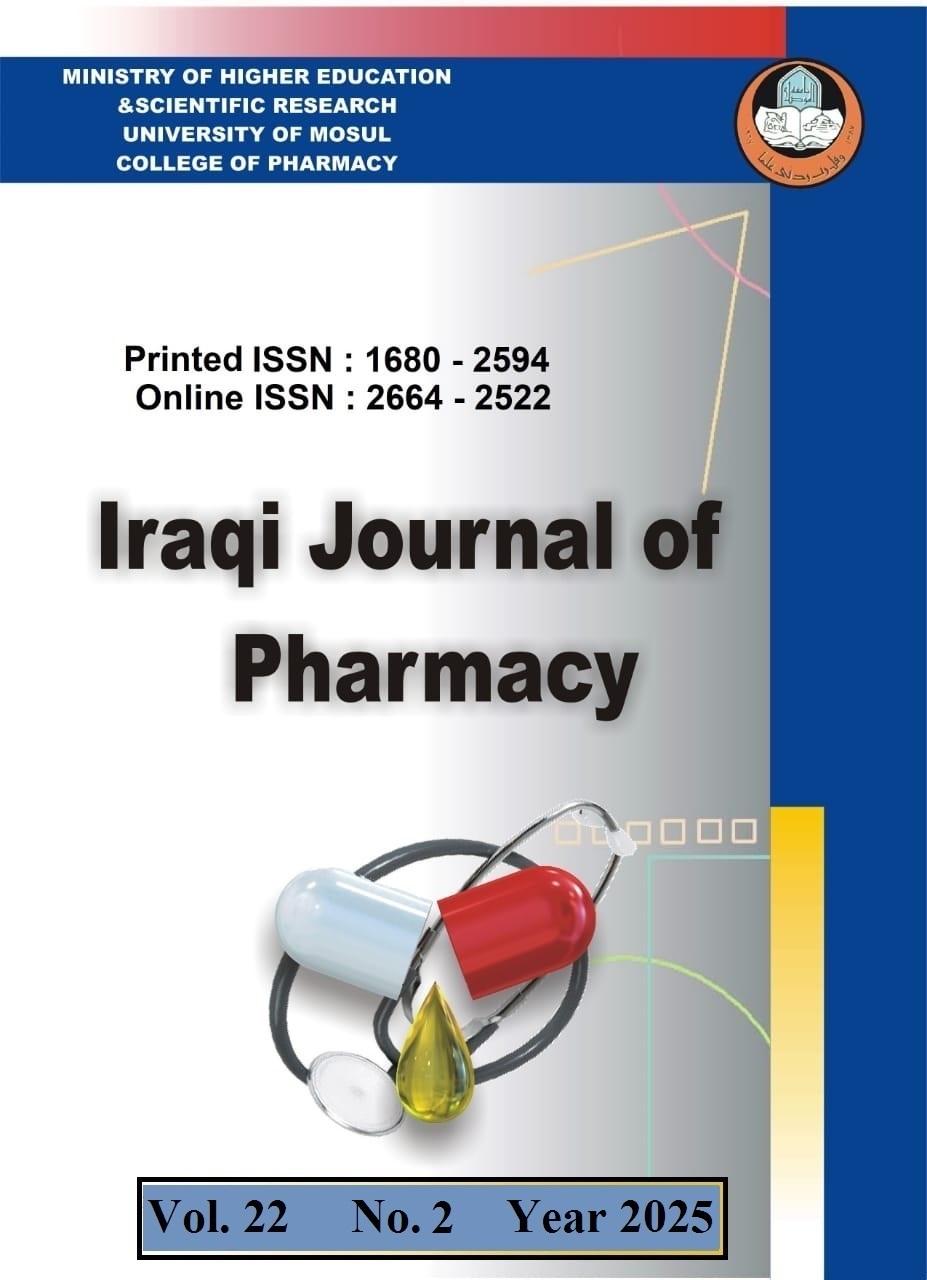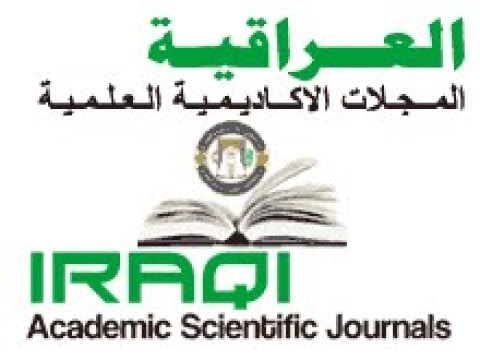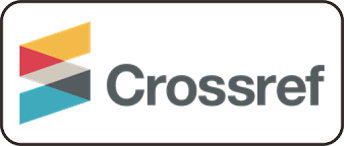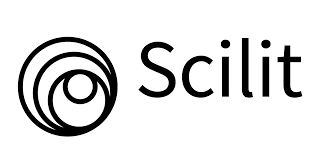Characterization of Constituent Therapeutic Components of Alcea kurdica Flowers and Leaves Using HPLC Technique
Abstract
Background: Malvaceae is a large herbal family with more than a hundred genera and thousands of species. Some of these species are well-known for their therapeutic activity, including Alcea. Aim: The purpose of this study is to isolate and identify the biologically and therapeutically active constituents of the flowers and leaves of Alcea kurdica alongside the characterization of the extract composition. Methods: Extraction was done with 70% ethanol using Soxhlet extraction method. The fractionated extracts were condensed, dried, and labeled as (LEA) for organic leaf extract, (LW) for aqueous leaf extract, (FEA) for organic flower extract, and (FW) for aqueous flower extract using ethyl acetate with an equal volume of water and shaken three times. Results: The isolated flavonoids and sterols were identified by comparison with the chromatograms of the standard compounds, which were prepared under standard circumstances. Flavonoids and sterols were found in the leaves and flower extract of Alcea kurdica after HPLC analysis.
References
- Aboobucker SI, Suza WP. Why do plants convert sitosterol to stigmasterol?. Frontiers in plant science. 2019;10:354.
- Ali F, Rahul, Naz F, Jyoti S, Siddique YH. Health functionality of apigenin: A review. International Journal of Food Properties. 2017;20(6):1197-238.
- Bayer C, Kubitzki K. Malvaceae. Springer Berlin Heidelberg. 2003.
- Borsari M, Gabbi C, Ghelfi F, Grandi R, Saladini M, Severi S, Borella F. Silybin, a new iron-chelating agent. Journal of inorganic biochemistry. 2001;85(2-3):123-9.
- Bouayed J, Piri K, Rammal H, Dicko A, Desor F, Younos C, Soulimani R. Comparative evaluation of the antioxidant potential of some Iranian medicinal plants. Food Chemistry. 2007;104(1):364-8.
- Bulama JS, Dangoggo SM, Mathias SN. Isolation and characterization of beta-sitosterol from ethyl acetate extract of root bark of Terminalia glaucescens. International Journal of Scientific and Research Publications. 2015;5(3):1-3.
- Egamberdieva D, Mamedov N, Ovidi E, Tiezzi A, Craker L. Phytochemical and pharmacological properties of medicinal plants from Uzbekistan: A review. Journal of Medicinally Active Plants. 2017;5(2):59-75.
- Ertas A, Boga M, Gazioglu I, Yesil Y, Hasimi N, Ozaslan C, Yilmaz H, Kaplan M. Fatty acid, essential oil and phenolic compositions of alcea pallida and alcea apterocarpa with antioxidant, anticholinesterase and antimicrobial activities. Chiang Mai Journal of Science. 2016;43(1):1143-53.
- Esmaeelian B, Kamrani YY, Amoozegar MA, Rahmani S, Rahimi M, Amanlou M. Anti-cariogenic properties of malvidin-3, 5-diglucoside isolated from Alcea longipedicellata against oral bacteria. International Journal of Pharmacology. 2007;3:468-74.
- Fahamiya N, Shiffa M, Aslam M. A comprehensive review on Althaea rosea Linn. Journal of Pharmaceutical Research. 2016;6(11).
- Focho DA, Nkeng EA, Lucha CF, Ndam WT, Afegenui A. Ethnobotanical survey of plants used to treat diseases of the reproductive system and preliminary phytochemical screening of some species of malvaceae in Ndop Central Sub-division, Cameroon. Journal of Medicinal Plants Research. 2009;3(4):301-14.
- Ganeshpurkar A, Saluja AK. The pharmacological potential of rutin. Saudi pharmaceutical journal. 2017;25(2):149-64.
- Jebir RM, Mustafa YF. Natural Coumarin-Lead Compounds: A Review of Their Medicinal Potentials. Iraqi Journal of Pharmacy. 2022;18(2):13961.
- Kaur N, Chaudhary J, Jain A, Kishore L. Stigmasterol: a comprehensive review. International Journal of Pharmaceutical Sciences and Research. 2011;2(9):2259.
- Keser S, Keser F, Tekin S, Kaygili O, Turkoglu I, Demir E, Karatepe M, Kirbag S, Yilmaz O, Sandal S, Turkoglu S. In vitro Antiradical, Antimicrobial and Antiproliferative Activities and Phytochemical Compositions of Endemic Alcea calvertii (Boiss) Boiss. Flowers. Duzce Universitesi Bilim ve Teknoloji Dergisi. 2020;8(1):693-701.
- Khodayari H, Arabameri M. Alcea acaulis and A. fasciculiflora, two new records for the flora of Iran. Rostaniha. 2019;20(2):173-81.
- Maji AK, Pandit S, Banerji P, Banerjee D. A validated RP-HPLC method for simultaneous determination of betulin, lupeol and stigmasterol in Asteracantha longifolia nees. International Journal of Pharmacy and Pharmaceutical Sciences. 2014;6(5):691-5.
- Mustafa YF, Oglah MK, Bashir MK. Conjugation of sinapic acid analogues with 5- Fluorouracil: Synthesis, preliminary cytotoxicity, and release study. Systematic Reviews in Pharmacy. 2020;11(3):4829.
- Nahar L, Onder A, Sarker SD. A review on the recent advances in HPLC, UHPLC and UPLC analyses of naturally occurring cannabinoids (20102019). Phytochemical Analysis. 2020;31(4):413-57.
- Ngamsuk S, Huang TC, Hsu JL. Determination of phenolic compounds, procyanidins, and antioxidant activity in processed Coffea arabica L. leaves. Foods. 2019;8(9):389.
- Ojulari OV, Lee SG, Nam JO. Beneficial effects of natural bioactive compounds from Hibiscus sabdariffa L. on obesity. Molecules. 2019;24(1):210.
- Ozturk RB, Zengin G, Sinan KI, Montesano D, Zheleva-Dimitrova D, Gevrenova R, Uba AI, Caklcoglu U, Kaplan A, Jugreet S, DallAcqua S. Which Extraction Solvents and Methods Are More Effective in Terms of Chemical Composition and Biological Activity of Alcea fasciculiflora from Turkey?. Molecules. 2022;27(15):5011.
- Perez-Castano E, Ruiz-Samblas C, Medina-Rodriguez S, Quiros-Rodriguez V, Jimenez-Carvelo AM, Valverde-Som L, Gonzalez-Casado A, Cuadros-Rodriguez L. Comparison of different analytical classification scenarios: application for the geographical origin of edible palm oil by sterolic (NP) HPLC fingerprinting. Analytical Methods. 2015;7(10):4192-201.
- Qader SW, Awad HM. Evaluation of antioxidant, antimicrobial and cytotoxicity of Alcea kurdica Alef. Jordan Journal of Biological Sciences. 2014;7(3):205-9.
- Sen A, Dhavan P, Shukla KK, Singh S, Tejovathi G. Analysis of IR, NMR and antimicrobial activity of -sitosterol isolated from Momordica charantia. Science secure journal of biotechnology. 2012;1(1):9-13.
- Shah SA, Akhtar N, Akram M, Shah PA, Saeed T, Ahmed K, Asif HM. Pharmacological activity of Althaea officinalis L. Journal of Medicinal Plants Research. 2011;5(24):5662-6.
- Shukla S, Gupta S. Apigenin: A Promising Molecule for Cancer Prevention. Pharmaceutical Research. 2010;27(6):962-78.
- Tao H, Cui B, Zhang H, Bekhit AE, Lu F. Identification and characterization of flavonoids compounds in cassava leaves (Manihot esculenta Crantz) by HPLC/FTICR-MS. International journal of food properties. 2019;22(1):1134-45.
- Ullah S, Naseem RA, Hussain A, Sheikh IA, Farooq M. HPLC profile of phenolic acids and flavonoids of Ocimum sanctum and O. basilicum. International Journal of Plant Based Pharmaceuticals. 2022;2(2):205-9.
- Vadivel V. Distribution of flavonoids among Malvaceae family membersA review. International Journal of Green Pharmacy. 2016;10(1):S33.








